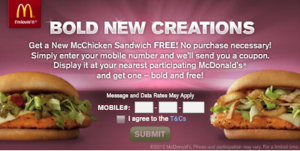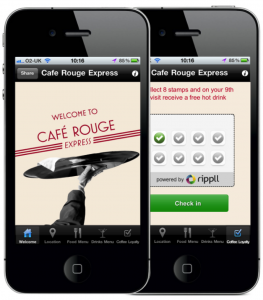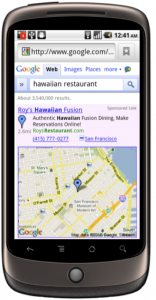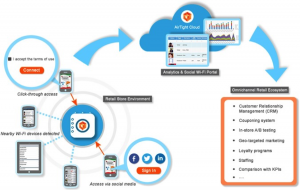Mobile technology has reached unprecedented levels on innovation. Products like Google Cardboard are revolutionizing virtual reality, and yearly location-based innovations are creating astounding utility. In 2016, mobile marketing will be a must-have by many businesses. Media-centric advertisements, immersive SMS and dynamic social media environments are to be expected.
Companies are urged to adopt mobile strategies, and for many reasons. Everyday mobile users have come to expect higher forms of engagement, and they’re pushing the smartphone’s technological progress in an interesting direction. Business providers are switching to mobile-centric platforms for the following causes:
One: Smartphone Users are Relying on SMS
About 79 percent of mobile users currently rely on SMS opt-in services to make purchasing decisions. Modern shoppers are fully engaged with their devices, and they’re preferring brand providers capable of offering text-heavy engagement platforms. Automated SMS platforms, too, are on the rise, boosting the total number of consumers considering text-for-service options superior than other provided offers.
Check out McDonald’s SMS optin-in campaign:
Two: Mobile Loyalty Programs Work
An astounding 90 percent of smartphone users enrolled in mobile loyalty clubs have found them beneficial. Buyers love feeling like “part of the program.” Moreover, they’re expectant of fully immersive outreach campaigns. Modern consumers are actively agreeing upon loyalty program participation, and companies able to host such programs are experiencing immense growth.
Check out Cafe Rouge Express running a mobile loyalty campaign:
Find out how group texting is assisting the shift to mobile-based loyalty programs. Every day, more consumers enter long-term brand programs with friends and family.
Three: Mobile Search is Becoming Preferred
Recent studies have revealed the sheer power behind mobile search. About 90 percent of mobile searches lead to consumer action, and modern businesses harnessing in-depth search systems are finding a massive surge in in-store traffic. If your company has a responsive design, it can capitalize on the consumer’s inherent need of information. Store hours, location, product information and reviews have become the modern buyer’s go-to search queries.
See how Roy’s restaurant is taking advantage of the explosion of mobile search:
Four: Information Can Be Gathered In-Store
Many sources have stated the importance of in-store mobile data gathering. Because a majority of modern outlets support Wi-Fi, consumers are hooking into brand-specific check-in campaigns, store searches and loyalty programs. In-store Wi-Fi contains a massive benefit: It can procure in-depth consumer information.
If a consumer is hooked directly into your network, you’re able to analyze buying behavior, product preference and in-store activities. Brick-and-mortar outlets still hold weight in the mobile realm, and mobile marketers are working hard—and succeeding—at making a fully immersive experience.
Five: The Omnichannel Approach is Dominating
Today’s buyers view products online before ever entering a physical location. One-channel marketing isn’t effective anymore. Instead, prioritizing the “digital window shopper” proves to be effective. Mobile users typically carry their phones to the store, too. They’re taking their primary search devices with them, opening a slew of multi-channel possibilities. Now, marketers have big opportunities to propose great offers, time-sensitive benefits and overall convenience. In upcoming years, mobile will be considered a pre-requisite to the consumer’s buying cycle.
Six: The Numbers Don’t Lie
In 2016, over 2 billion consumers are expected to purchase smartphones worldwide. The sheer popularity of mobile access will drive business as we know it, and companies are urged to hop aboard. If they don’t they’ll fall behind the curve. Sure, challenges exist for the mobile marketer, but the road ahead is far clearer than it was a year ago.
Mobile marketing strategies are becoming streamlined, too. New features, new technology and new brand approaches are paving the way for upcoming innovators. Companies like Apple and Google are redefining the mobile marketing world by creating new tools used by everyday consumers, too. Now, text requests, mobile voting systems, augmented reality, social media chat and in-store pick-up options are mainstream mobile features. Hop into the mobile marketing revolution—you won’t be disappointed.
________________________________________________________________________
Sophorn Chhay is an inbound marketer specializing in attracting targeted visitors and generating sales qualified leads. Through Trumpia’s mass text messaging automation solution he helps businesses and organizations communicate effectively with their customers or members. Watch Trumpia’s 5-Minute Demo on how to execute an effective mobile marketing strategy.

Joseph A. Michelli, Ph.D. is a professional speaker and chief experience officer at The Michelli Experience. A New York Times #1 bestselling author, Dr. Michelli and his team consult with some of the world’s best customer experience companies.
Follow on Twitter: @josephmichelli







